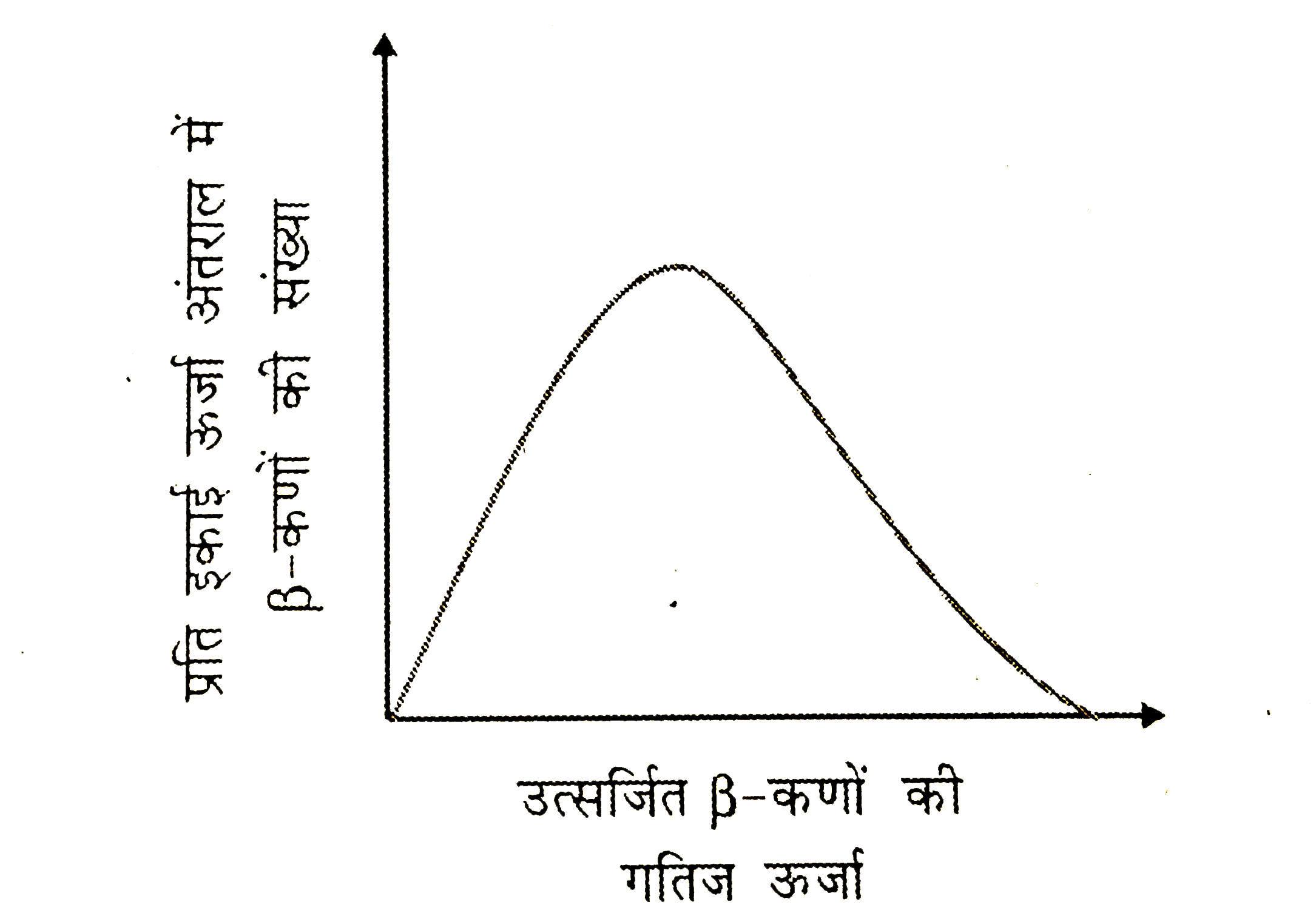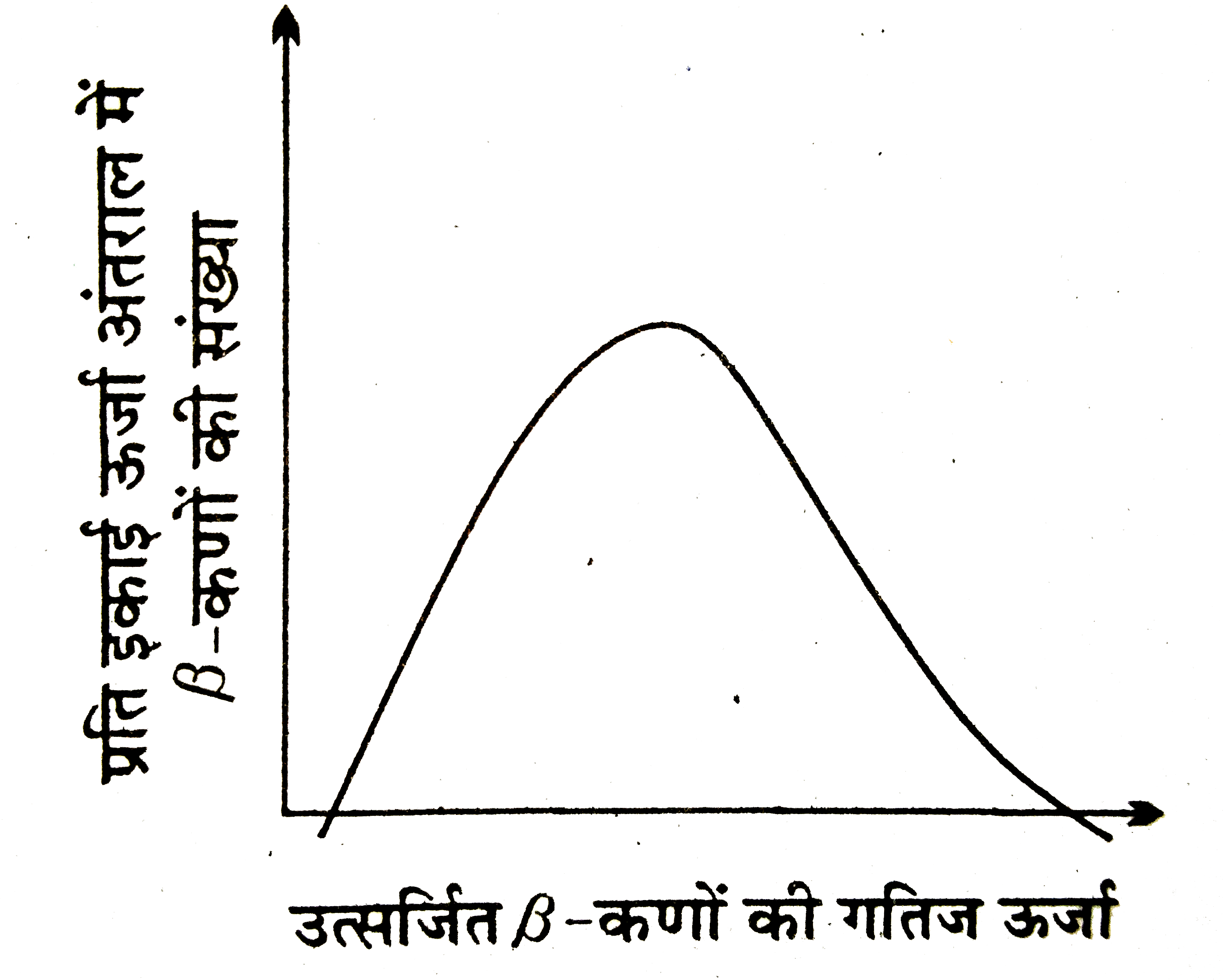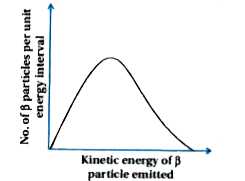Consider the decay of the free neutron at rest:
n = p + e−.
Show that the two-body decay of this type must necessarily give an electron of fixed energy and, therefore, cannot account for the observed continuous energy distribution in the β decay of a neutron or a nucleus.
 Solution in Punjabi
Solution in Punjabi
Step by step video & image solution for Consider the decay of the free neutron at rest: n = p + e^-. Show that the two-body decay of this type must necessarily give an electron of fixed energy and, therefore, cannot account for the observed continuous energy distribution in the beta decay of a neutron or a nucleus. by Physics experts to help you in doubts & scoring excellent marks in Class 12 exams.
Topper's Solved these Questions
Similar Questions
What is meant by radioactive substance?
03:40View SolutionWhat do you understand by polarisation of light ?Describe an experiment to demonstrate transverse nature of light.
02:47View SolutionState the characteristis of image formed by a plane mirror.
01:46View SolutionA free neutron decays to a proton but a free proton does not decay to a neutron. This is because
02:49View SolutionConsider the decay of a freee neutron at rest :nrarrp+e^(-). . Show that the two body decay of this type must necessarily give an electron of fixed energy, and therefore, cannot account for the observed continuous energy distribution ini the beta- decay of a neutron in a nucleus, figure.
02:49View SolutionA free neutron decays into a proton, an electron and
02:47View SolutionThe beta -decay process, discovered around 1900 , is basically the decay of a neutron (n) , In the laboratory, a proton (p) and an electron (e^(-)) are observed as the decay products of the neutron. Therefore, considering the decay of a neutron as a tro-body dcay process, it was observed that the electron kinetic energy has a continuous spectrum. Considering a three-body decay process i.e., n rarr p + e^(-)+overset(-)v_(e ) , around 1930 , Pauli explained the observed electron energy spectrum. Assuming the anti-neutrino (overset(-)V_(e )) to be massless and possessing negligible energy, and neutron to be at rest, momentum and energy conservation principles are applied. From this calculation, the maximum kinetic energy of the electron is 0.8xx10^(6)eV . The kinetic energy carried by the proton is only the recoil energy. What is the maximum energy of the anti-neutrino?
03:39View SolutionThe beta -decay process, discovered around 1900 , is basically the decay of a neutron (n) , In the laboratory, a proton (p) and an electron (e^(-)) are observed as the decay products of the neutron. Therefore, considering the decay of a neutron as a tro-body dcay process, it was observed that the electron kinetic energy has a continuous spectrum. Considering a three-body decay process i.e., n rarr p + e^(-)+overset(-)v_(e ) , around 1930 , Pauli explained the observed electron energy spectrum. Assuming the anti-neutrino (overset(-)V_(e )) to be massless and possessing negligible energy, and neutron to be at rest, momentum and energy conservation principles are applied. From this calculation, the maximum kinetic energy of the electron is 0.8xx10^(6)eV . The kinetic energy carried by the proton is only the recoil energy. If the anti-neutrino has a mass of 3eV//c^(2) (where c is the speed of light) instead of zero mass, what should be the range of the kinetic energy, K of the electron?
04:45View SolutionConsider the decay of a free neutron at rest: n top+e^(-) Show that the tow-body dacay of this type must necessarily give an electron of fixed energy and, therefore, cannot for the observed continous energy distribution in the beta -decay of a neutron or a nucleus.
03:50View Solutionविरामावस्था में किसी मुख्य न्यूट्रॉन के क्षय पर विचार कीजिए n→p+e−
प्रदर्शित कीजिए की इस प्रकार के द्विपिंड क्षय से नियत ऊर्जा का कोई इलेक्ट्रॉन अवश्य उत्सर्जित होना चाहिए , और इसलिए यह किसी न्यूट्रॉन या किसी नाभिक के - क्षय में प्रेक्षित सतत ऊर्जा वितरण का स्पष्टीकरण नहीं दे सकता (चित्र 6.19).
 03:45View Solution
03:45View Solutionविरामावस्था में किसी मुक्त न्यूट्रॉन के क्षय पर विचार कीजिए - n→p+e−
प्रदर्शित कीजिए कि इस प्रकार के द्विपिंड क्षय से नियत ऊर्जा का कोई इलेक्ट्रॉन अवश्य उत्सर्जित होना चाहिए और इसलिए यह किसी न्यूट्रॉन या किसी नाभिक के β− क्षय में प्रेक्षित सतत ऊर्जा वितरण का स्पष्टीकरण नहीं दे सकता ।
 View Solution
View Solutionएक मुक्त न्यूट्रॉन पर प्रोटॉन के रूप में क्षय होता हैं परन्तु एक मुक्त प्रोटॉन का न्यूट्रॉन के रूप में क्षय नहीं होता क्योंकि
04:14View SolutionConsider the decay of a free neutron at rest: n top+e^(-) Show that the tow-body dacay of this type must necessarily give an electron of fixed energy and, therefore, cannot for the observed continous energy distribution in the beta -decay of a neutron or a nucleus.
01:21View SolutionA free neutron decays into a proton, an electron and
04:06View SolutionConsider the decay of a free neutron at rest :
n→p+e−
Show that the two body decay of this type must necessary give an electron of fixed energy and therefore cannot account distribution in the β−decay of a neutron or a nucleous as shown in figure .

[ Note : The simple result of this exercise was one among the several arguments advanced by W . Pauli to perdict the existence of a third particle in the decay products of β− decay . This particle is known as neutrino spin 12 ( like e− p or n ) but is neutral ad either massless or having an extremely small mass (compared to the mass of electron) and which interacts very weakly with matter . The correct decay process of neutron is : n→p+e(−)+v)View SolutionA free neutron decays into a proton, an electron and
03:11View Solution

